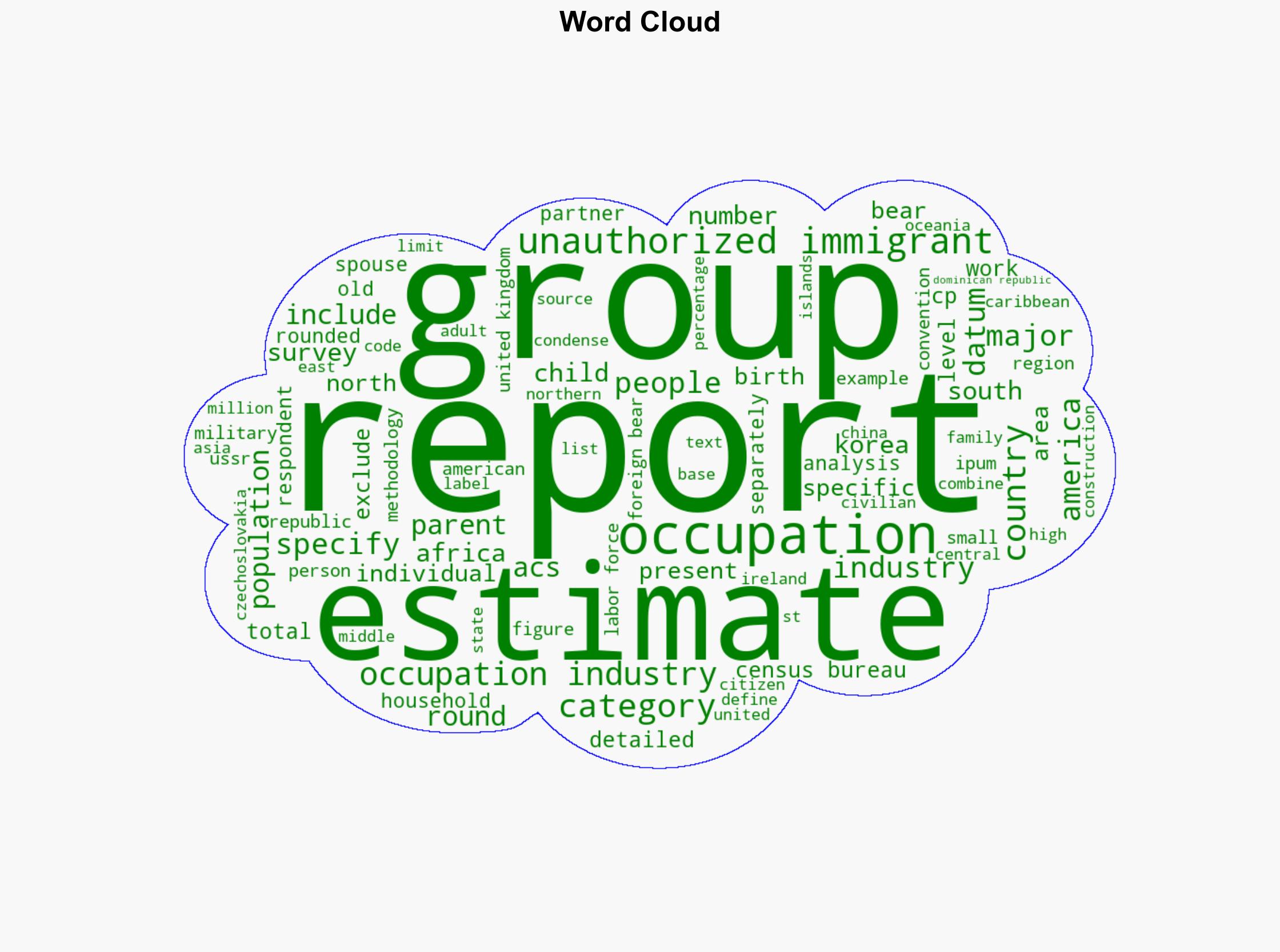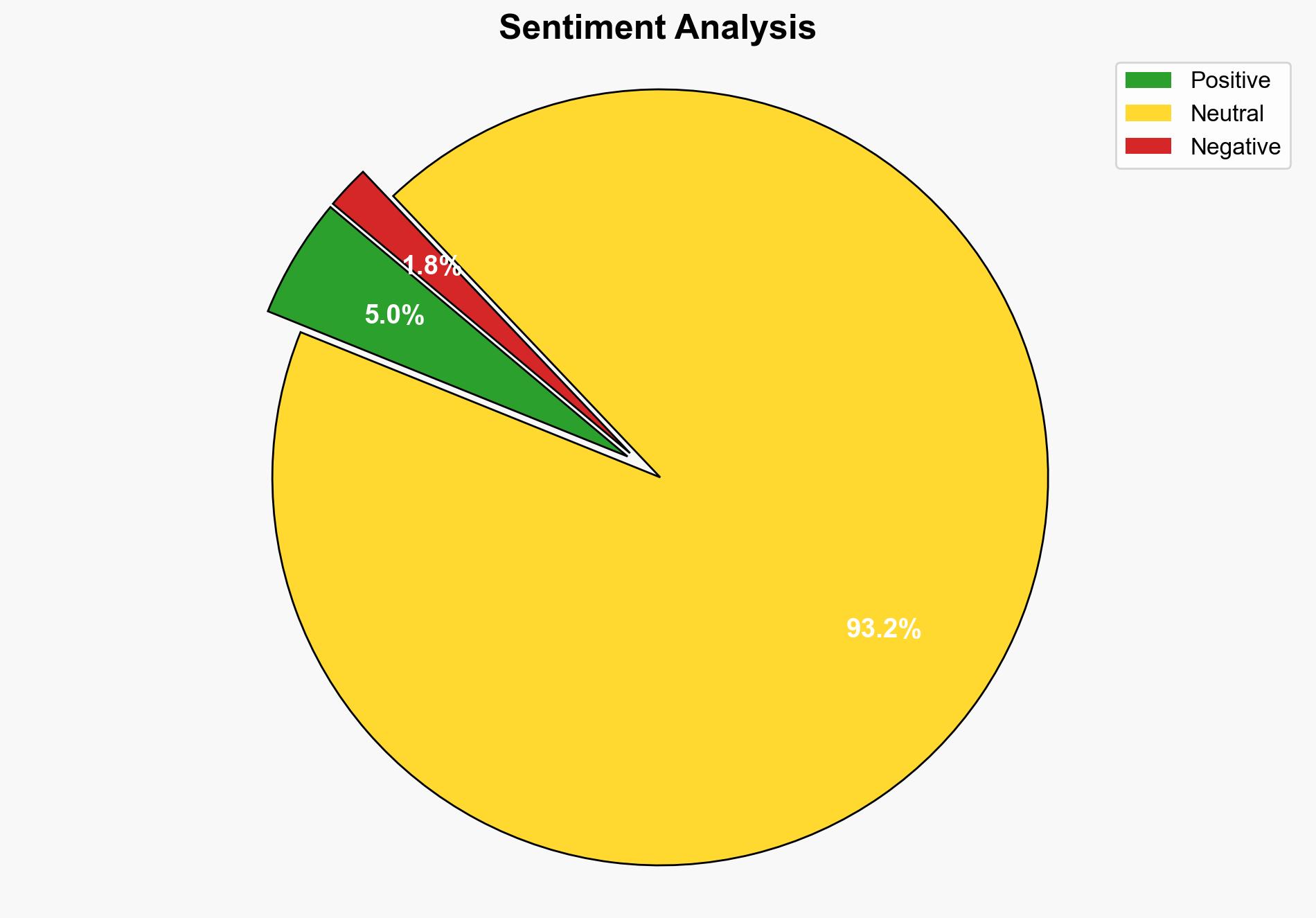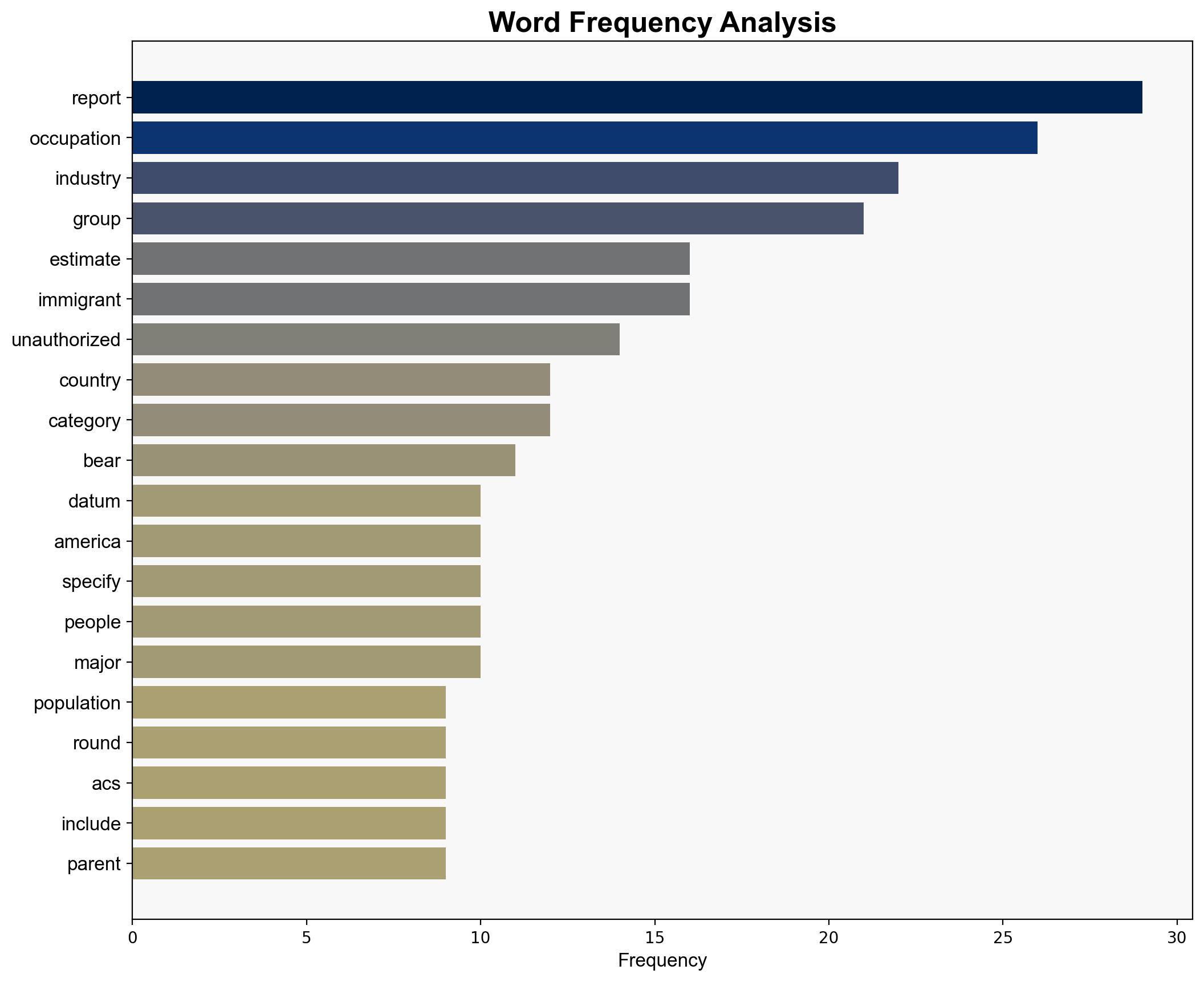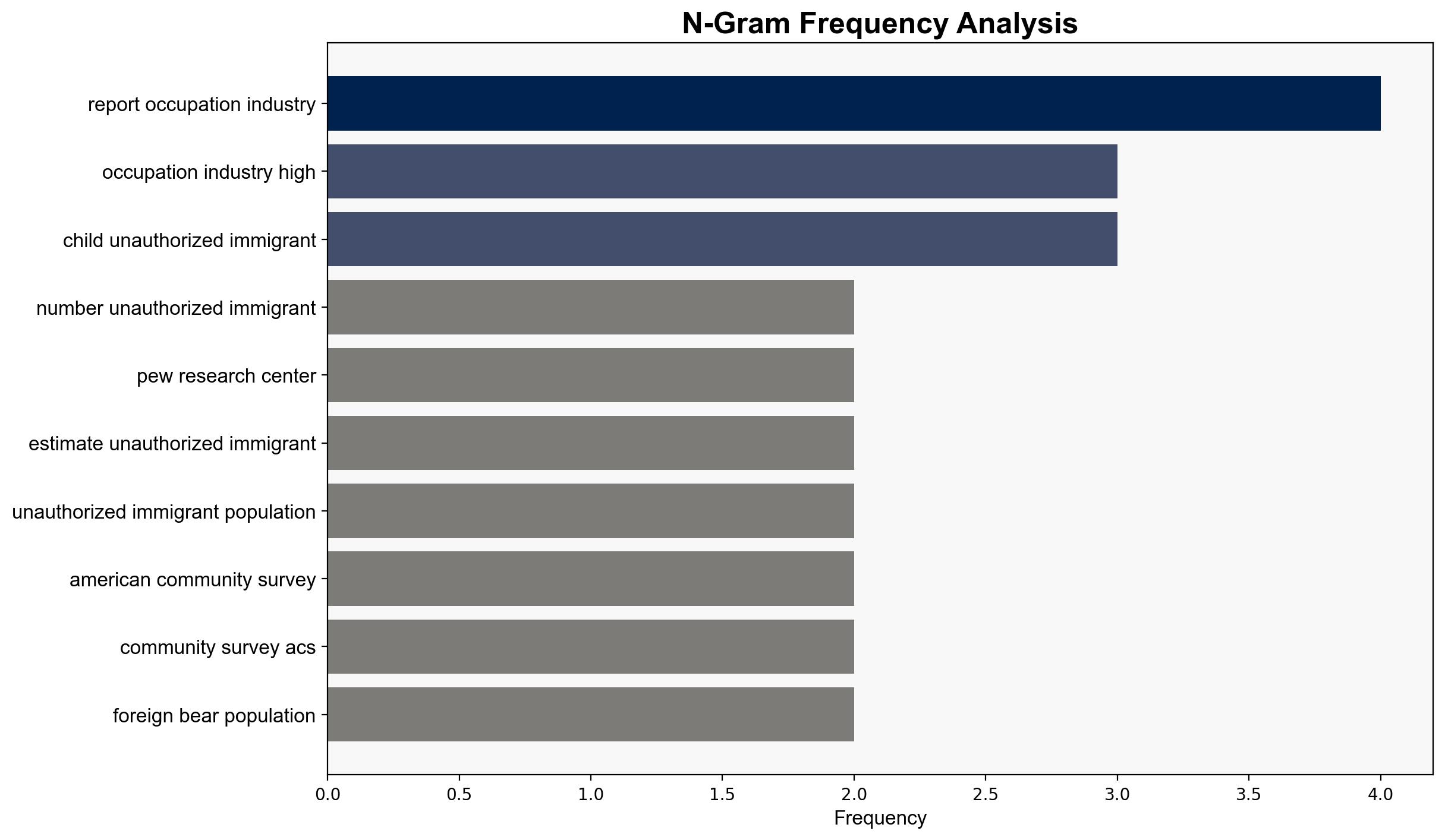Methodology C Definitions and concepts – Pew Research Center
Published on: 2025-08-21
Intelligence Report: Methodology C Definitions and Concepts – Pew Research Center
1. BLUF (Bottom Line Up Front)
The analysis of Pew Research Center’s methodology for estimating unauthorized immigrant populations reveals potential discrepancies in data precision and regional classification. The most supported hypothesis suggests that rounding conventions and regional grouping may lead to underestimations or misclassifications. Confidence level: Moderate. Recommended action: Review and refine data collection and analysis techniques to enhance accuracy.
2. Competing Hypotheses
Hypothesis 1: The rounding conventions and regional grouping used in Pew’s methodology lead to significant underestimations of unauthorized immigrant populations, potentially impacting policy decisions.
Hypothesis 2: The methodology’s use of multiple data sources and rounding conventions provides a robust estimate that accurately reflects the unauthorized immigrant population despite inherent data limitations.
Using ACH 2.0, Hypothesis 1 is better supported due to the potential for data distortion through rounding and regional classification, which could obscure precise population figures.
3. Key Assumptions and Red Flags
Assumptions include the reliability of census and survey data, and the appropriateness of rounding conventions. A red flag is the potential for significant data distortion due to rounding, which may not be adequately addressed in the methodology. The reliance on broad regional groupings could mask significant demographic trends.
4. Implications and Strategic Risks
Inaccurate population estimates could lead to misguided policy decisions, affecting immigration control and resource allocation. Misclassification of regions might skew demographic analyses, impacting geopolitical strategies. The economic implications include potential misallocation of funds for social services and infrastructure.
5. Recommendations and Outlook
- Refine data collection methods to minimize rounding errors and improve regional accuracy.
- Conduct sensitivity analyses to understand the impact of rounding on population estimates.
- Scenario-based projections:
- Best Case: Improved data accuracy leads to better-informed policy decisions.
- Worst Case: Continued inaccuracies result in ineffective immigration policies and resource misallocation.
- Most Likely: Partial improvements in data accuracy lead to incremental policy adjustments.
6. Key Individuals and Entities
No specific individuals are mentioned in the source text. The Pew Research Center is the primary entity involved in the methodology.
7. Thematic Tags
national security threats, data accuracy, immigration policy, demographic analysis




